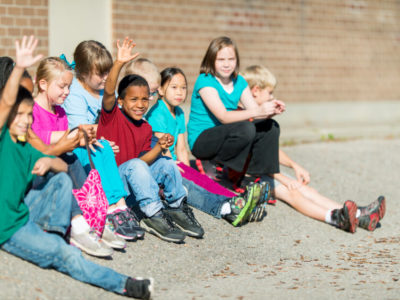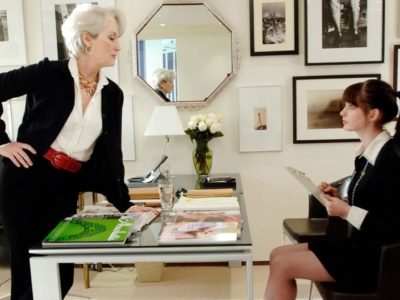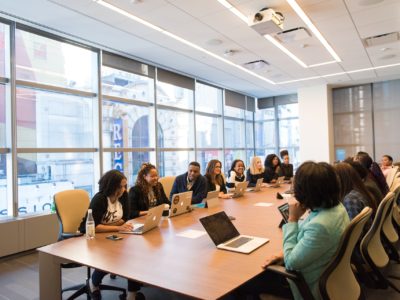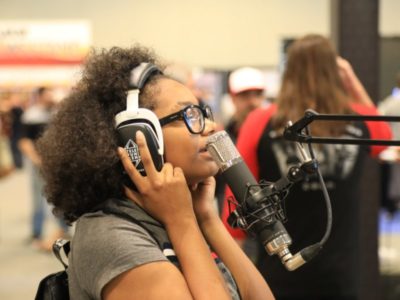How much could I really learn from a bunch of kids?
When my professor asked if I’d like to get involved with a three-month community art project as a reporter, I jumped at the opportunity. It wasn’t necessarily an internship, but the project still came with its rewards: An excused absence from work and studying? A chance to exercise my writing skills in the real world? Yes please!
I initially looked at this opportunity as an escape and less as a serious job. It wouldn’t be so hard, I thought. Just a resume-builder. My task was to interview and record the stories of 12 elementary school kids who were creating murals with recycled yarn. Easy.
I was very, very wrong.
For the project, each student had drawn a portrait of a person who had a big impact on his or her life. As a journalism and communications student, I was used to talking with new people, interviewing and observing. But, the first day I arrived, most of the kids were suspicious of the new stranger. I could see the confusion on their faces as I walked into the cafeteria. Who is this person, their eyes seemed to ask, she’s not a kid like us, but she’s not a teacher either. They were immediately distrustful of me.
For the next two hours, I walked around, from table to table, asking whom each mural represented. Most of the kids just blankly stared at me or offered one-word answers. I kept asking basic questions, but nothing helped. I left that afternoon, unsuccessful and discouraged. It was at this point that a wave of panic set in. What had I gotten myself into? These kids didn’t trust me, and weren’t going to talk. I had deadlines to make! Didn’t they know that?
I freaked out, but I didn’t give up. The following week I returned with a recorder, a microphone and a new attitude. I was going to be fun and so was this project. As I started to pull out the equipment, a couple of the kids started to gravitate towards me. “What’s that?” one 4th grade girl asked. “Are we going to be on TV or something?” I quickly explained what we would be doing. They didn’t completely understand, but they seemed open to the idea.
I started interviewing as I had the week before, but still we were getting nowhere with the stories. The kids actually seemed more intimidated and reserved than they had the day before. I reacted quickly with a new idea. “How about we start by you guys interviewing each other?” I said. I had barely finished talking before 12 little hands shot into the air and a chorus of “Me! Me! Me!” and “Oh, pick me!” started up.
Over the next three months, I traveled back to that cafeteria every Monday from 3:30 to 5:30 p.m. to chat with Josiah, Breah, Megan and the eight other unique/hilarious/crazy elementary schoolers. By listening to the kids as they grew in confidence each week, I learned to be a better storyteller and interviewer. I realized that I, too, grew confident in my abilities as a reporter as time went on.
I formed relationships with each of them. I learned about their teachers, their classes, what they each want to be when they grow up, summer camp, head lice, Nicki Minaj (from a 4th grader’s perspective), and walked away with a handful of new tongue twisters I had never heard before. On the final day of the project, I was swarmed with hugs and thank yous. One little girl tapped me on the shoulder, asking if she could have my autograph before I left for good.
Compared to other professional positions I have held in the past, this was by far the most challenging. It was three months packed with deadlines, long car rides and hours spent editing. Even with the help of a seasoned journalist and professor, there were many times that I felt defeated and had to think on my feet.
Even though it was difficult and unpaid, the project offered me a lot of freedom as a writer. Had I pursued a paid internship or fellowship, I may not have had the same amount of creative control. Actually, I’m sure of it. It turns out that interacting with a bunch of elementary schoolers taught me more about myself and being a journalist than I ever could have imagined.



















